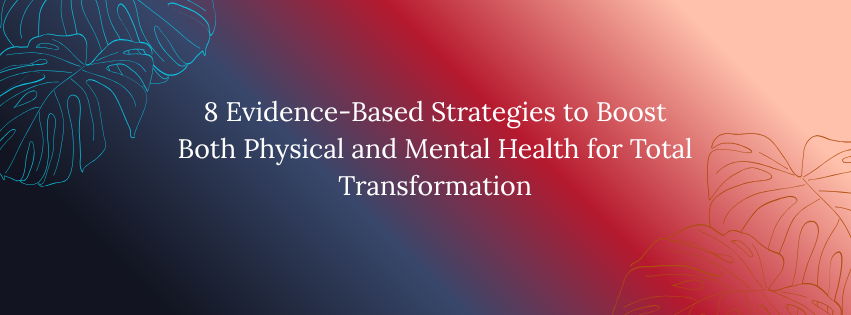our mind and body are deeply intertwined. When one thrives, the other benefits — and when one struggles, the other often suffers. By taking care of both, you can unlock a happier, healthier, and more fulfilling life.
Let’s explore how physical and mental health are connected, the ways they influence each other, and proven strategies to achieve balance for overall well-being.
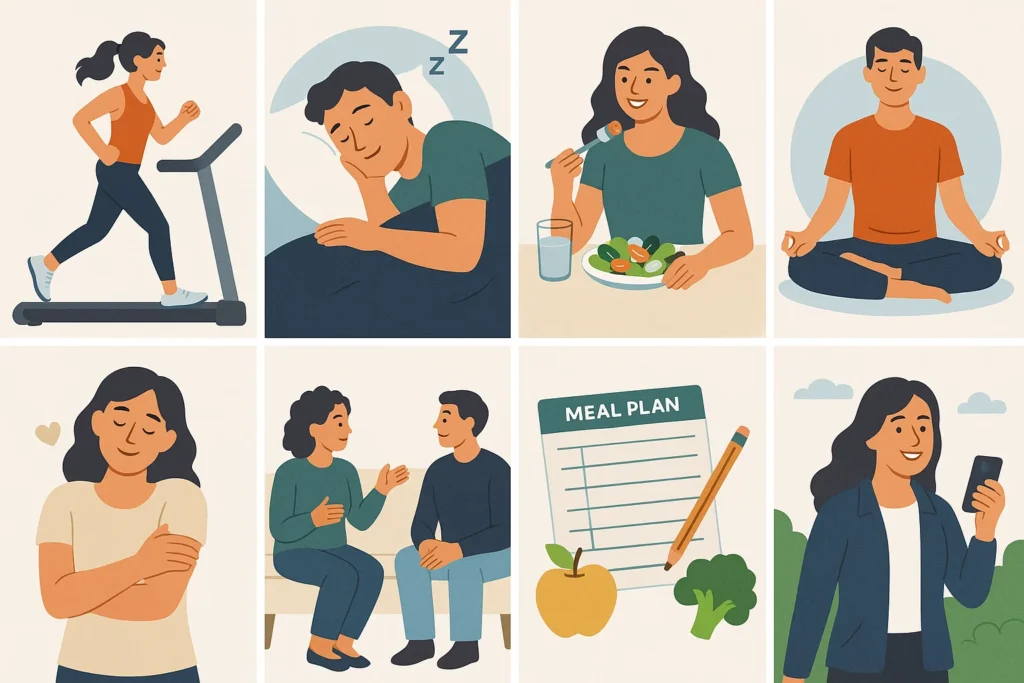
Understanding the Link Between Physical and Mental Health
Physical health is shaped by a mix of genetics, lifestyle choices, and environmental factors. Staying healthy physically often requires:
- Regular exercise
- A balanced diet
- Adequate sleep
- Effective stress management
- Avoiding harmful substances
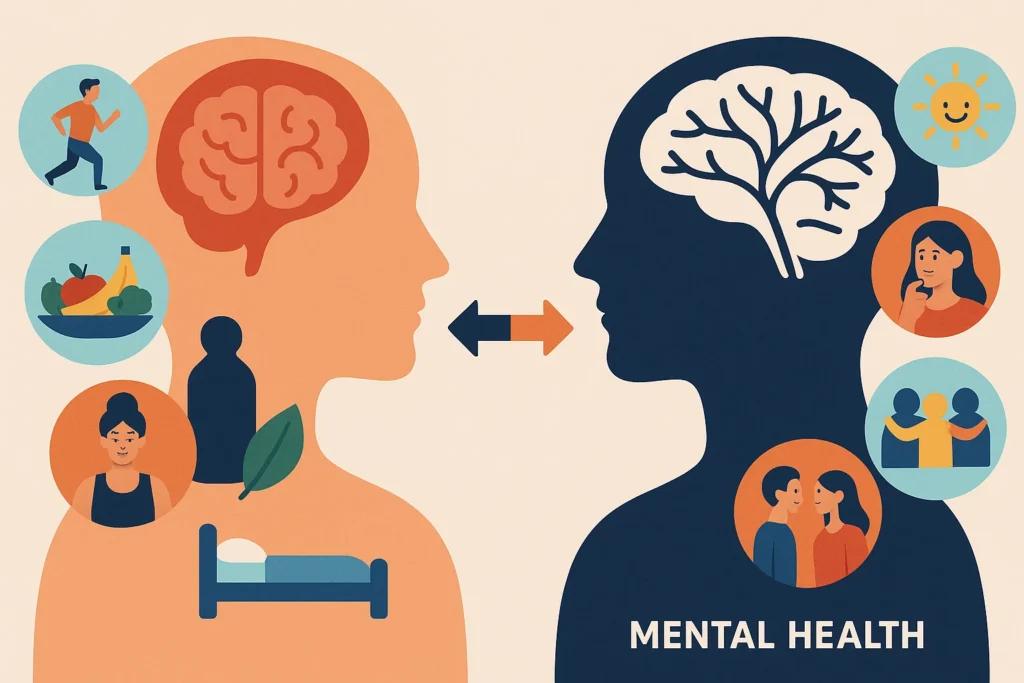
Mental health depends on a balance of biological, psychological, and social factors. Strong mental health often comes from:
- A positive outlook on life
- Healthy coping mechanisms
- Supportive social connections
- Fulfilling relationships
Research proves that the two are connected. For instance, regular exercise can improve mood and reduce symptoms of depression and anxiety, while chronic illnesses can increase stress and trigger emotional challenges.
How Physical Health Shapes Mental Well-Being
Taking care of your body does more than improve appearance — it directly influences your emotional state.
Chronic Physical Health Problems and Mental Health

Long-term health conditions, especially chronic pain, can cause:
- Anxiety – Ongoing discomfort can create constant worry.
- Lower self-esteem – Reduced ability to work or manage daily life can harm confidence.
- Activity limitations – Restrictions may lead to isolation and loneliness.
- Relationship strain – Pain can cause frustration and tension in personal connections.
- Poor quality of life – Daily challenges impact overall happiness.
- Worsening mental health – Pre-existing depression or anxiety can intensify.
- Sleep problems – Pain often disrupts rest, leading to fatigue.
- Higher stress levels – Ongoing discomfort adds emotional pressure.
Solution: Effective pain management combined with emotional support can improve both mental and physical health.
The Mental Health Benefits of Physical Exercise
Regular exercise is one of the most powerful ways to improve mood and emotional balance. It can:
- Reduce stress and anxiety – Physical activity triggers endorphin release, your body’s natural mood lifters.
- Enhance mood – Exercise combats depression and boosts happiness.
- Improve self-esteem – Strength and fitness progress increase body confidence.
- Ease depression symptoms – In some cases, exercise works as effectively as medication.
- Boost brain function – Physical activity enhances memory, focus, and decision-making.
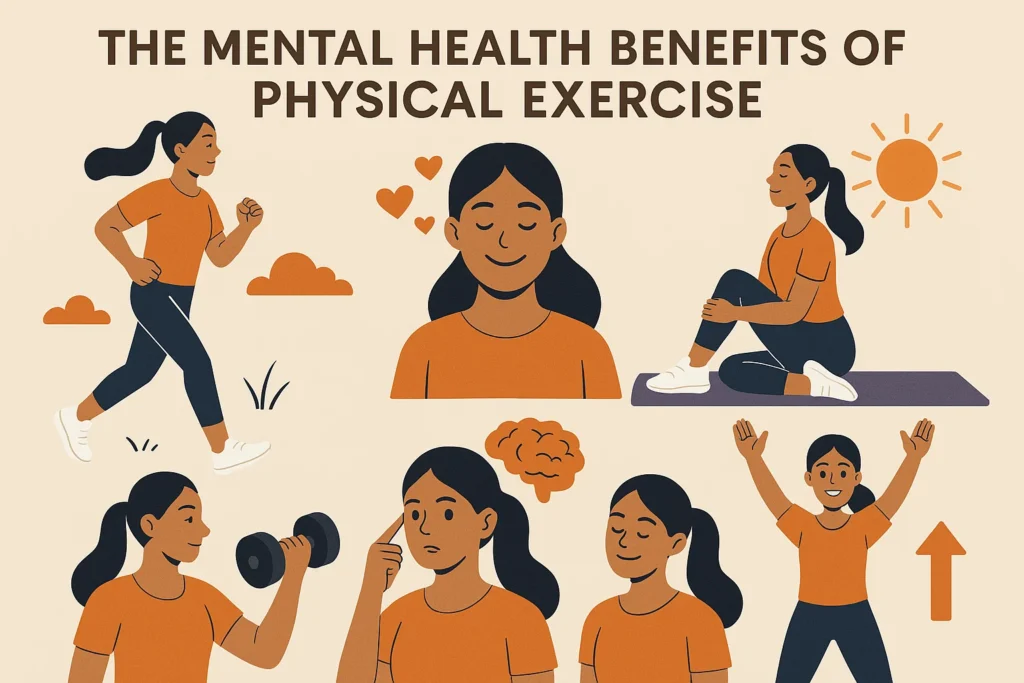
Why Sleep is Vital for Mental Health
Sleep is essential for recharging both mind and body. Adequate rest can:
- Lower stress and anxiety – Balanced hormones from proper rest improve emotional stability.
- Support physical health – Reduces risk of heart disease, diabetes, and obesity.
- Strengthen immunity – Sleep helps fight off illnesses.
On the flip side: Poor sleep quality can worsen depression, anxiety, and irritability while reducing cognitive performance.
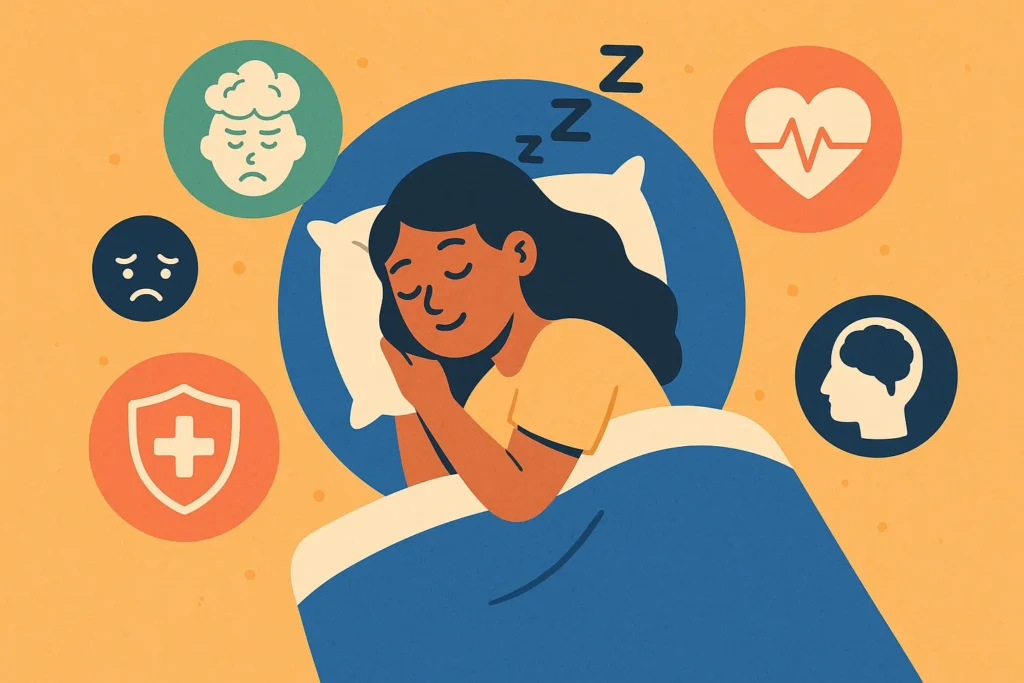
How Mental Health Impacts Physical Health
The mind can shape the body just as powerfully as the body shapes the mind.
Stress and Its Physical Effects
Chronic stress can cause:
- Digestive issues (IBS, acid reflux)
- Lower immunity
- Headaches and migraines
- Muscle pain and tension
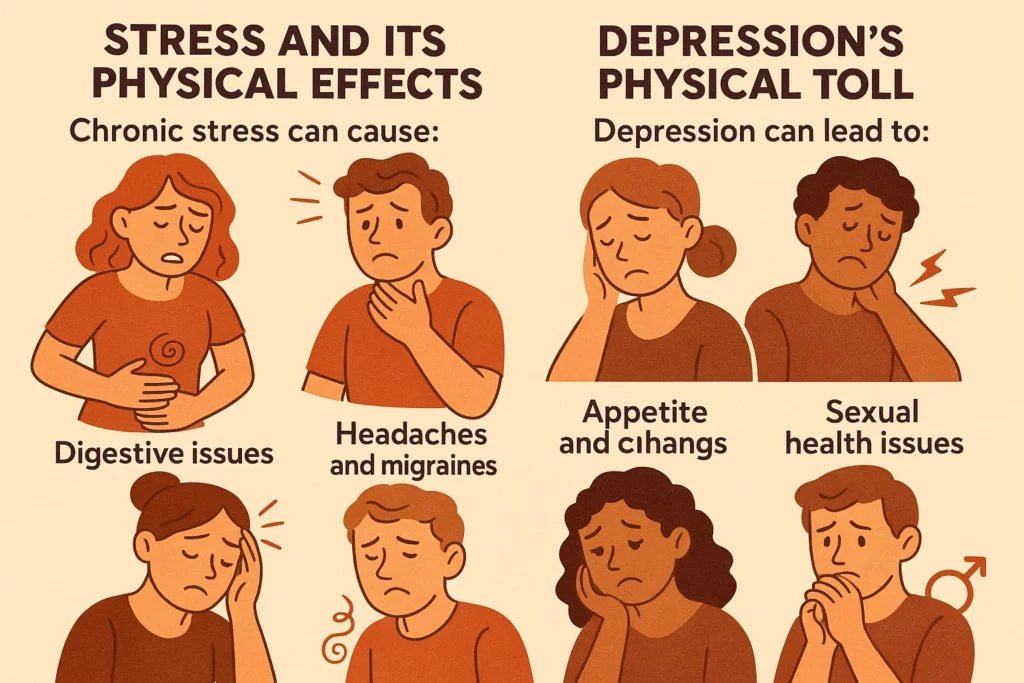
Depression’s Physical Toll
Depression can lead to:
- Higher risk of heart disease and stroke
- Digestive problems
- Appetite and weight changes
- Sexual health issues
8 Proven Strategies for Improving Both Physical and Mental Health
- Practice mindfulness and relaxation
- Meditation, deep breathing, progressive muscle relaxation, guided imagery, yoga, and journaling can lower stress and improve focus.
- Maintain a balanced diet
- Eat nutrient-rich foods, reduce processed items, and stay hydrated.
- Get consistent sleep
- Aim for 7–9 hours each night and stick to a regular bedtime.
- Exercise regularly
- Find activities you enjoy to make movement a consistent habit.
- Seek professional help when needed
- Therapists, doctors, and counselors can guide recovery and balance.
- Build a strong support system
- Spend time with positive, encouraging people.
- Manage chronic pain proactively
- Use medical treatments and healthy coping strategies to reduce discomfort.
- Create a stress management routine
- Combine relaxation, hobbies, and healthy lifestyle habits.
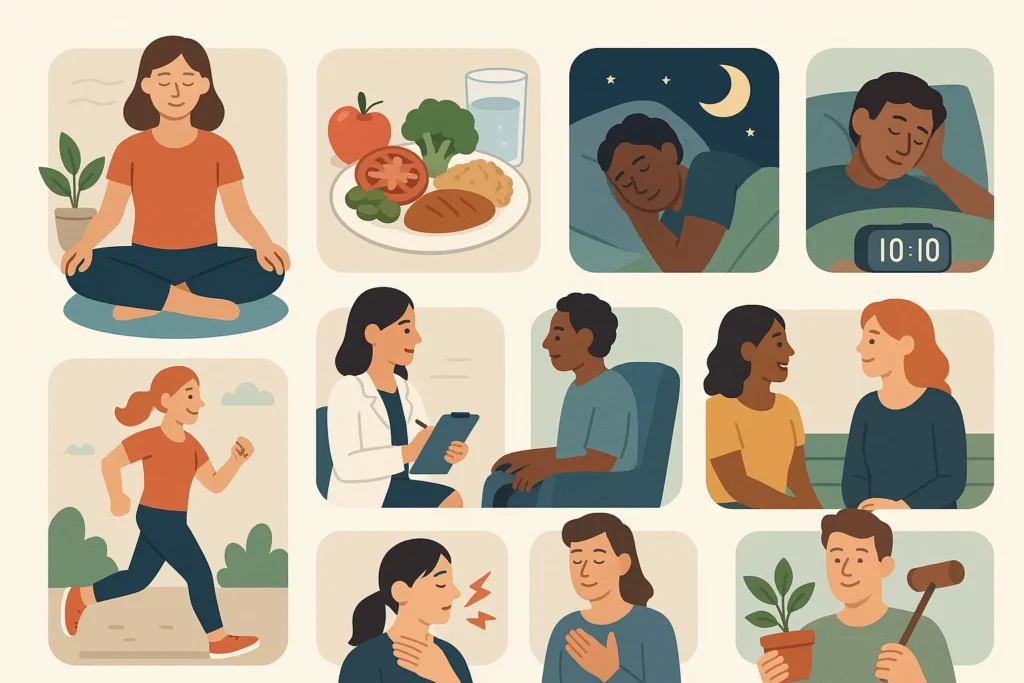
Final Thoughts
Physical and mental health are inseparable — improving one often benefits the other. By combining healthy lifestyle habits, emotional support, and professional guidance, you can build a strong mind-body connection that supports long-term happiness and well-being.
Taking a holistic approach isn’t just about preventing illness — it’s about creating a life where both your body and mind can thrive.
